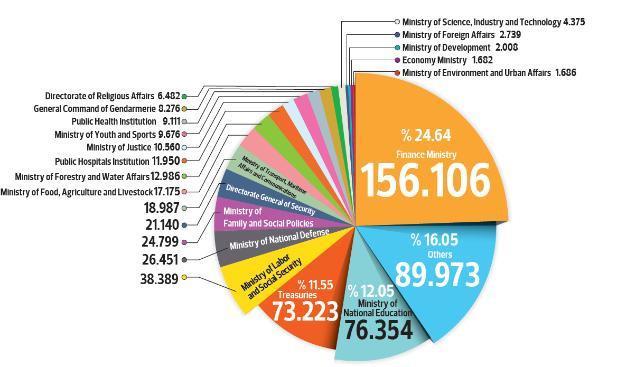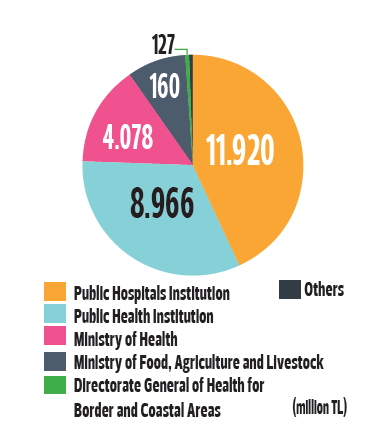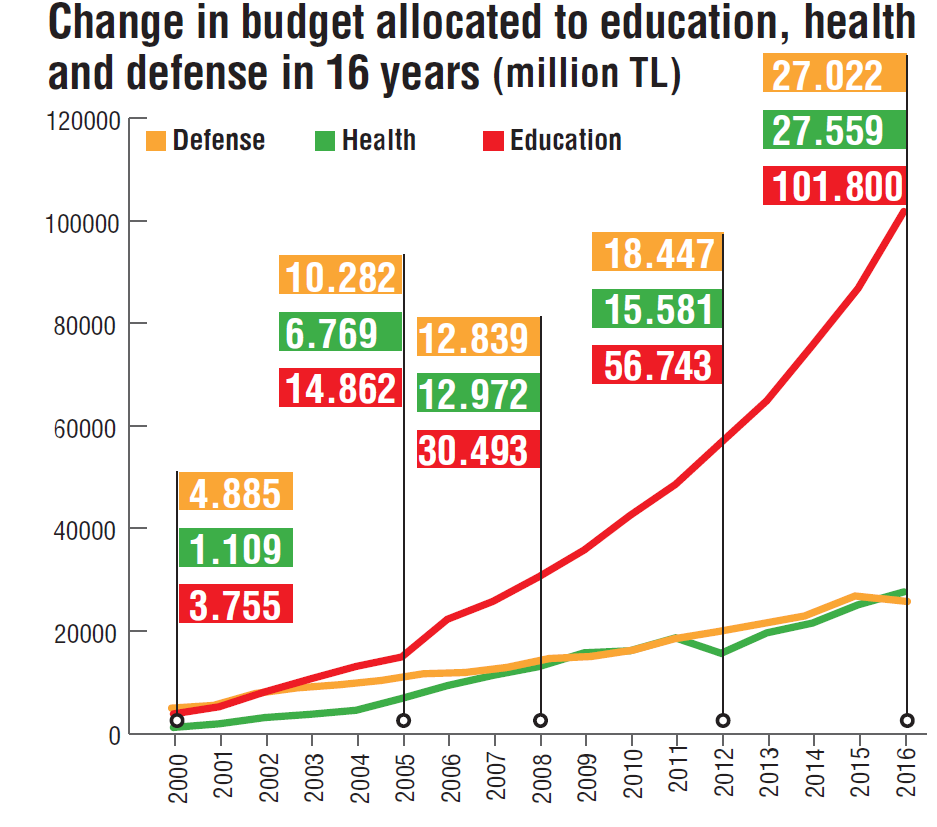Analysis: How the new central budget is allocated
Neşe Karanfil - Şebnem Turhan
 Turkey’s central budget was approved by parliament’s general board last week rather than at the beginning of the New Year due to the country’s election agenda in 2015. Where is the revenue coming from tax income and privatization going to be spent in this year’s budget?
Turkey’s central budget was approved by parliament’s general board last week rather than at the beginning of the New Year due to the country’s election agenda in 2015. Where is the revenue coming from tax income and privatization going to be spent in this year’s budget? The 2016 budget was accepted after many hours of work in parliament. The most significant feature of the 2016 budget is the huge effect of the economic promises made ahead of the Nov. 1, 2015, elections. The recent hikes in public servants’ salaries and the minimum wage have pushed up the staff and current transfer spending in the budget. Markets will closely follow whether the balance of the budget can be maintained and how much money will be spent on which items. It seems the direction of defense and security spending will be of crucial importance.

The state has allocated 570 billion Turkish Liras ($196 billion) of the budget to cover staff, social security, education, defense, investments and other items. Some 56 billion liras ($19 billion) of this amount will be used to pay interest payments. Around 217 billion liras ($74.6 billion) will be spent as current transfers, which cover money transfers to social security institutions, agricultural subsidies and local administration payments. Losses of the state-run economic enterprises are also covered from this item. While the share of the current transfers was 7.3 in the national income in 2002, this figure decreased in the 2003-2007 period and rose to 7.5 percent in 2007. The share hit 9.3 percent in 2015 and is expected to see 9.9 percent this year due to the rises in the salaries of retirees. While staff spending was 6.4 percent, this figure is expected to rise to 6.7 percent over this year.
The total share of security and defense spending will be 3.1 percent of the national income over this year, with the inclusion of all spending by related units, such as the Defense Ministry, the Justice Ministry, the Interior Ministry, police forces and the National Intelligence Organization (MİT).
The education budget has also been increased. While the share of educational spending of the national income was 2.93 percent in 2006, this figure is planned to rise to 4.61 percent.

What is a central budget?
A central budget is a legal document which shows how much money the state will spend and how much tax income it will collect. The budget laws are issued annually. Spending includes how much money will be allocated for staff salaries and education, health and defense items. On the revenue side are tax incomes, non-tax incomes and privatization revenues. A draft budget is presented some 75 days ahead of the New Year to parliament, which is on Oct. 17. The draft budget is discussed first by the planning and budget commission and then by the general board. After it is published in the Official Gazette, it becomes effective as of Jan. 1. As the parliamentary elections were held last November, a temporary budget has been in effect for the first three months of 2016 and the discussions for the new budget were made in early 2016.
Budget share shrinkages
The share of health expenses in the national income was 1.22 percent in 2006. Up to 1.25 percent of the national income will be allocated for health expenses in 2016. We have seen the share of these expenses in the budget drop in recent years. While the share of heath expenses was 5.21 percent in 2006, this figure decreased to 4.95 percent in 2015. The share is expected to decline to 4.83 percent over this year. The Health Ministry’s budget is 4.2 billion liras ($1.44 billion). The share is relatively low because hospitals are organized under another institution.
Why does the Finance Ministry take the biggest share?
The Finance Ministry takes the lion’s share of the budget because current transfers are made by this ministry. This unit also manages the financial sources which are transferred to local administration units from taxes. The Finance Ministry also covers social security institutions’ deficits and the differences in retired people’s salary hikes.
What does the ‘other’ item cover?
This item covers the institutions for which the budget is below 1.6 billion liras ($550 million), some institutions which have an exclusive budget at 68 billion liras ($23.4 billion) in total, regulatory bodies’ budgets and treasury aids.
















